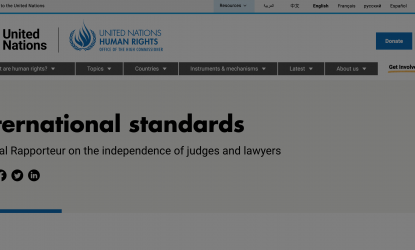The reports on this page provide guidance on issues related to the judicial branch of government, including judicial structure, judicial powers, judicial appointment/removal, judicial independence and constitutional courts.
Selected Materials
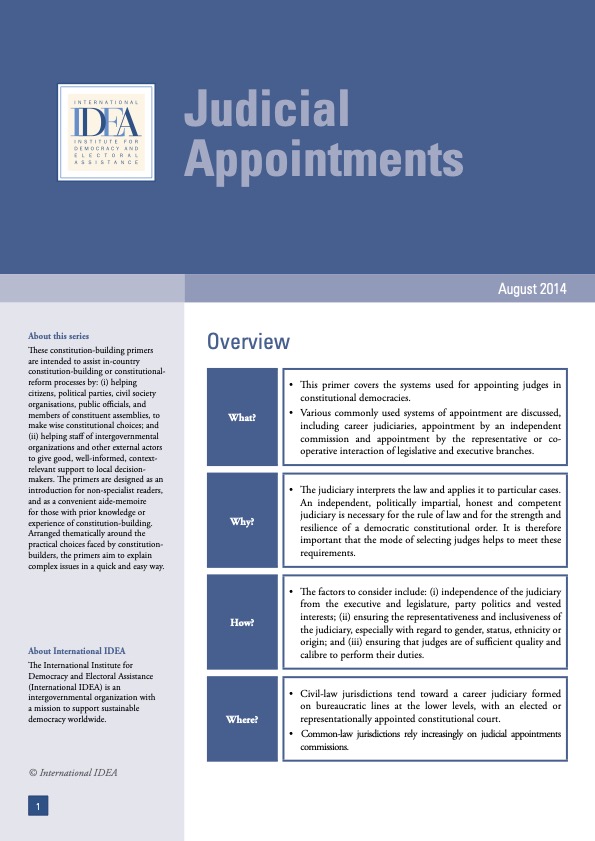
This primer considers how the rules, processes and mechanisms of judicial appointment embodied in the constitution, laws, and conventional practice can contribute to a judiciary that is professionally competent, politically impartial and independent from undue influence—whether from the executive, legislature or other influential public or private interests.
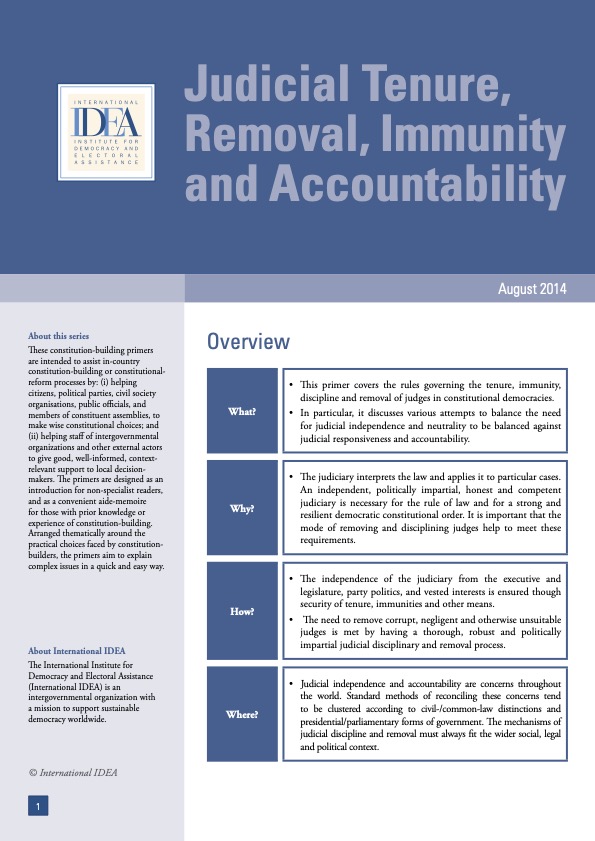
This primer offers options for constitutional design in order to find appropriate balance between judicial independence and the need to be able to hold judges accountable with mechanisms in place to discipline and possibly remove judges who neglect their duties or abuse their position of trust.
This briefing paper sets out international standards for judicial independence and highlights the essential functions of an independent judiciary in a constitutional democracy. Drawing on a combination of both hard and soft sources of international law, the paper reveals a definition of judicial independence that can be met in various legal and constitutional contexts, while allowing courts to protect human rights, secure the rule of law, and ensure the principles of a constitutional democracy. Keywords: Judicial/ Judiciary, Independence of the Judiciary. Example.
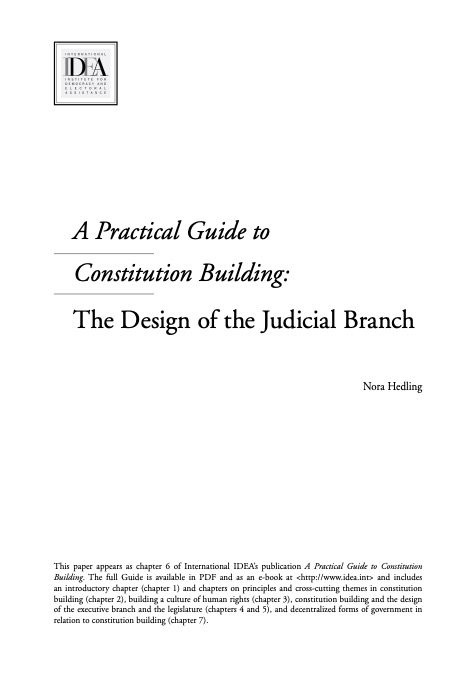
This paper appears as chapter 6 of International IDEA’s publication A Practical Guide to Constitution Building. It focuses on the design of the judicial branch of government. The paper starts with a discussion of the powers of the judiciary, including constitutional review and additional powers such as advisory opinions. Included is a discussion of the role of the court in special circumstances, such as within the electoral process, or during states of emergency. Next is a discussion concerning judicial independence and accountability, and specifically how the selection, removal, and term limits of judges inform these issues. The paper ends with a discussion on legal pluralism, or the incorporation of more than one legal tradition within the constitution.
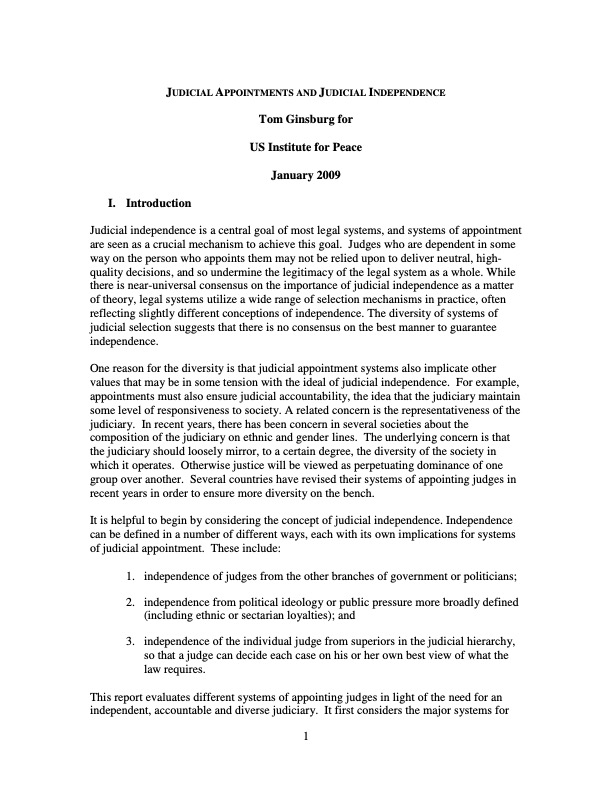
This paper discusses the concept of judicial independence and its relationship to the system of judicial appointments, discipline, and removal. After a general discussion, the paper concludes with some remarks on the situation in Iraq. The systems of judicial appointment discussed include: 1. appointment by political institutions, 2. appointment by the judiciary itself, 3. appointment by a judicial council (which may include non-judge members), and 4. selection through an electoral system. In discussing each of these models as well as the various models available to address the removal and discipline of judges, the paper provides a theoretical discussion as well as a discussion through the lens of specific country examples. Keywords: Issue/Option Paper, Judiciary, Judicial, Judicial Independence, Judiciary Independence, Judicial Selection and Removal, Example.
This resolution of the United Nations Congress on the Prevention of Crime and the Treatment of Offenders deals with securing and promoting the independence of the judiciary. It sets out basic principles regarding the following substantive issues: independence of the judiciary (and the importance of enshrining the principle in the constitution); freedom of expression and association of judges; qualifications, selection, and training; conditions of service and tenure; professional secrecy and immunity; and discipline, suspension, and removal.
Constitutional Courts
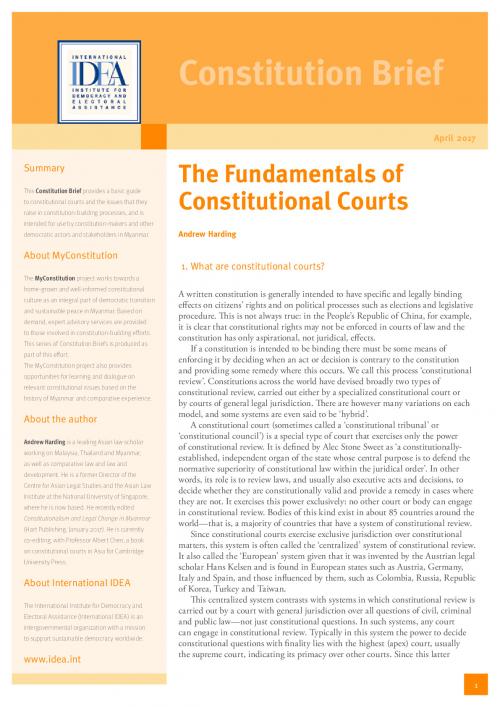
This Constitutional Brief from International IDEA provides a basic guide to constitutional courts and the issues that they raise in constitution-building processes.
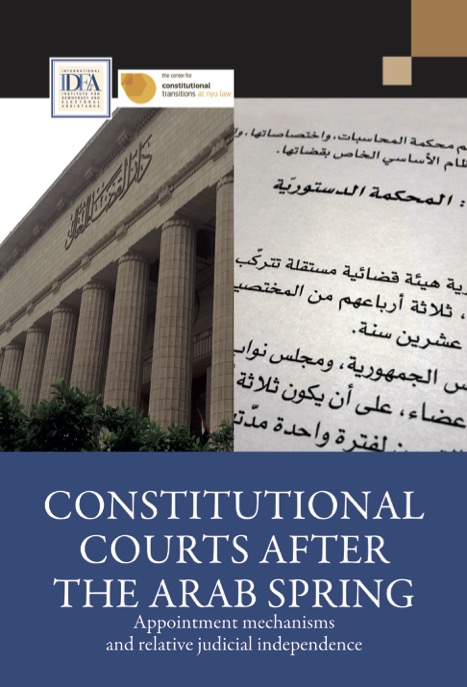
This report discusses and analyses four models for constitutional court appointments, with a particular emphasis on how effectively those models foster a sense of political investment on the part of multiple political actors. The four models are: (1) the legislative supermajority model; (2) the judicial council model; (3) the judicial-executive model; and (4) the multi-constituency model. The report examines how the four models have been applied in six countries: Germany, South Africa, Egypt, Iraq, Italy and Turkey. The report also compares the qualifications required for appointment to the constitutional court, and the rules for removing constitutional court judges, in these six countries.
This paper is a look at the global trends with respect to constitutional courts. It touches on the following issues: (i) emerging international and regional consensus principles and models (ii) the rationale for creating Constitutional Courts, including the advantages and disadvantages of having such a court (iii) the composition of Constitutional Courts (iv) the jurisdiction of Constitutional Courts including: whether the court has preventative or ad hoc judicial review powers, and whether the court has abstract or concrete constitutional control (v) the contribution of Constitutional Courts to judicial independence, including the different relationships that can be crafted between the regular judiciary and the constitutional court (vi) the different types of standing available to bring a case to the Constitutional Court and (vii) the various means to ensure public access to information handled by the Constitutional Court. The paper also touches on the broader picture, discussing the role of constitutional courts within the power structure of a democratic state.
This memorandum considers how to design constitutional courts to be most effective. With reference to examples such as Hungary, Italy, and Russia, the article examines dimensions including jurisdiction, appointment and tenure, and the effect of judicial declarations of unconstitutionality. The article also examines how a carefully designed and properly limited constitutional court can aid the creation of the rule of law, with specific reference to Afghanistan.

